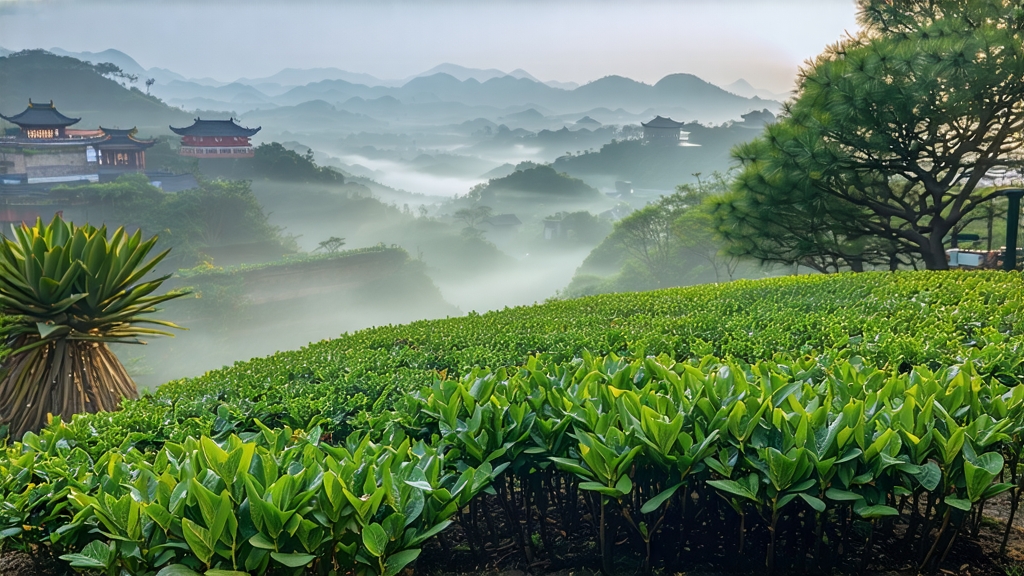
If green tea is spring’s first kiss and black tea winter’s ember, then Tie Guan Yin—literally “Iron Goddess of Mercy”—is the suspended moment between seasons, a half-fermented whisper that has seduced southern Fujian for almost three centuries. To the international palate it is simply an oolong, yet within that single word lies a microcosm of Chinese craft, folklore, and terroir that refuses to be reduced to a commodity. This essay invites you to walk the granite switchbacks of Anxi county, to hear the clack of bamboo trays and the sigh of charcoal embers, and finally to taste the liquid jade that set emperors, pirates, and Silicon Valley coders on the same quest for a single, lingering orchid note.
-
From Altar to Market: a Brief History
Legend places the birth of Tie Guan Yin in the 1720s, when a devout farmer named Wei Yin was summoned by the goddess Guan Yin in a dream. She pointed to a cave behind his ramshackle temple where a single tea shrub grew in impossible loam. Wei transplanted it, nurtured it, and used the leaves to perfume the altar incense. The infusion tasted, so the story goes, of mercy itself—iron-strong in finish, yet floral in soul. By the Qianlong era (1735-1796) the tea had migrated from temple to tribute, traveling north in bamboo-lined crates along the Min River to Beijing’s Forbidden City. European traders first catalogued it as “Tea of the Iron Bodhisattva” in 1858, mis-transliterating the name but correctly identifying its mystical cachet. Today Anxi county produces 45,000 metric tons annually, yet the most coveted lots still come from the original 24 mother trees clinging to the cliffs of Xiping village, their genetic fingerprint protected by UNESCO designation. -
Varietals within a Name
Western menus often list “Tie Guan Yin” as if it were monolithic. In Anxi, farmers speak of at least five distinct styles separated by roasting degree and harvest season:
- Qing Xiang (Light Fragrance): Modern market darling, 12-18 % oxidation, barely roasted, electric jade color, snap-pea and gardenia nose.
- Nong Xiang (Heavy Fragrance): Traditional 1950s profile, 30 % oxidation, three charcoal roasts over 60 °C lychee wood, mahogany leaf, cocoa-laced liquor.
- Chen Xiang (Aged Fragrance): Leaves re-roasted every two years for a decade, yielding a burgundy infusion reminiscent of old Madeira and dried longan.
- Chun Guan Yin: Spring pick, one bud & two leaves, harvested at 5 a.m. when dew still beads; highest amino-acid content, silkiest texture.
- Qiu Guan Yin: Autumn equinox harvest, cooler nights concentrate aromatics; prized for “yin yun,” a cooling throaty echo that singers love.
Each style is still Camellia sinensis var. sinensis cv. Tieguanyin, but the processing arc diverges like two musical interpretations of the same score.
-
The Craft: an Eight-Act Drama
Tie Guan Yin is not picked; it is choreographed. The drama unfolds over 36 hours and 8 meticulous steps: -
Picking: Only the “dragonfly head” standard—open leaf, opposite small bud, no nails or leather gloves to avoid bruising.
-
Sun Withering: Leaves are spread on reed mats for 20 minutes at 28 °C, losing 8 % moisture and triggering grassy volatiles.
-
Indoor Withering: Moved onto water-veined bamboo trays in climate-controlled rooms where enzymatic oxidation begins; farmers shuffle trays every 15 minutes like card dealers.
-
Shaking: The signature “yao qing” toss: 3 kg batches are rhythmically thrown against bamboo drum walls, edge bruising releases catechins and triggers partial fermentation. Masters listen for a rustle likened to “spring silkworms devouring mulberry.”
-
Fixing: A 270 °C tumble for 4 minutes halts oxidation at the desired 20-30 %, locking in the jade-green center while edges turn russet.
-
Rolling: Cloth-wrapped lumps are pressed under